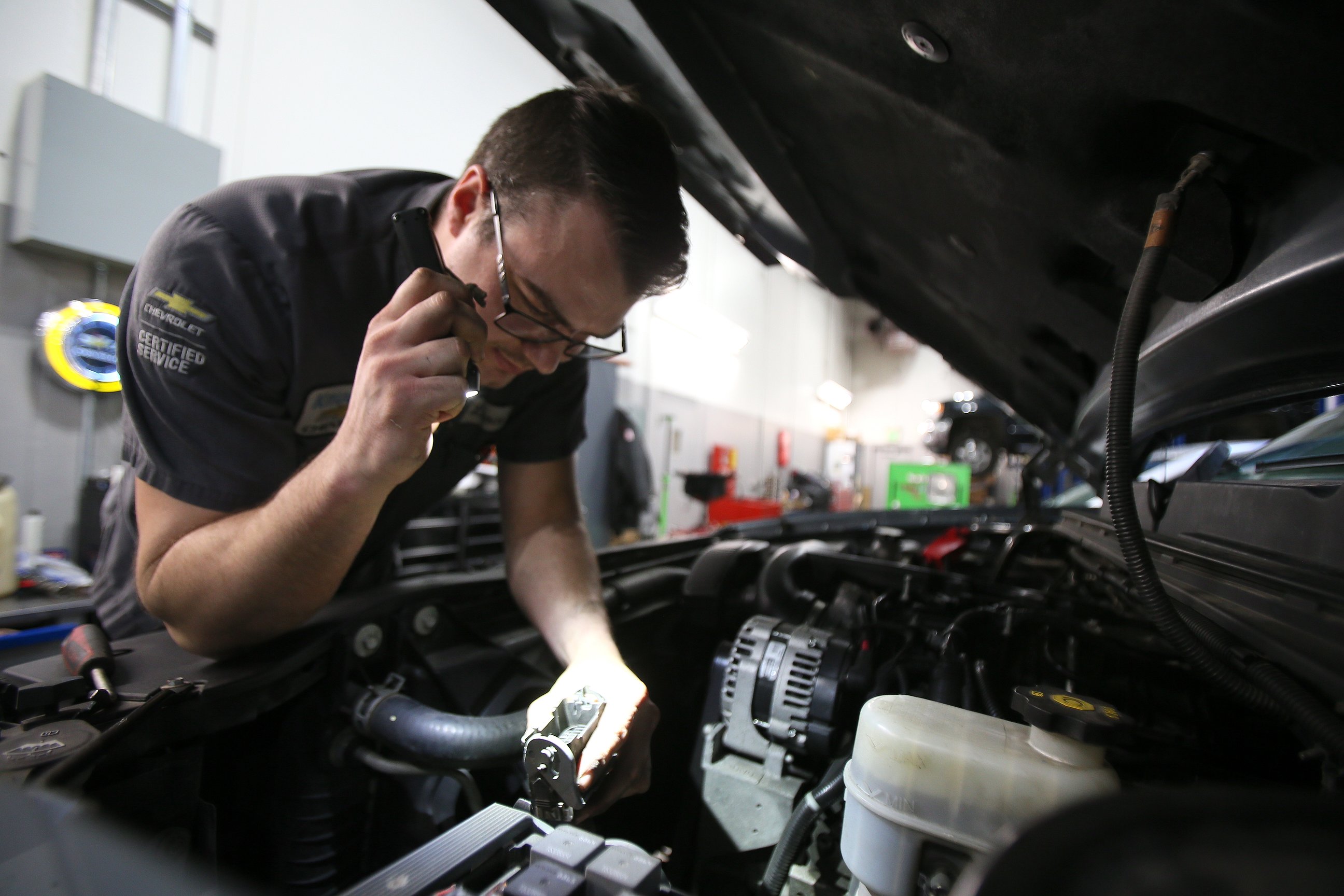Auto industry steady in '23, looking up for '24

Cody Edwards, a Knudtsen Chevrolet salesman, walks by a red hot Chevy Corvette C8 Stingray in the Post Falls showroom.
If Eve Knudtsen could use one word to sum up business at her dealership for the year 2023, that word would be "steady."
"We stayed the course," the Knudtsen Chevrolet president said, seated in her office near red, white and blue Corvettes that gleamed on her showroom floor.
"Steady" is not too shabby for a year when the auto industry endured a 45-day United Auto Workers strike just a couple years after a global pandemic. Knudtsen said the dealership sold slightly fewer than the 2,480 vehicles sold in 2022.
“At this time last year, when I was planning for 2023, I was more pessimistic in my outlook and pleasantly surprised with how the performance really was," Knudtsen said. "(2023) started out outpacing expectations. That continued pretty much up until the strike in September. We're going to end a little ahead of projection, despite the strike."
During the COVID years, Knudtsen Chevrolet dealt with supply chain shortages and general economic factors that affected the entire auto industry.
However, Knudtsen said logistics are always a struggle for manufacturers.
"Being able to move that finished product to the dealer is, even in the best of times, challenging,” she said.
Product delays weren’t unusual in 2023, she reported, although the strike was not one of the industry's highlights.
"We still believe there is a tremendous amount of pent-up demand out there," “We’re looking at regaining in 2024,” she said. said. "The headwind that we're facing right now beside lost production from the strike is interest rates."
Emerging from the pandemic, interest rates were unprecedentedly low. Now, Knudtsen said, interest is so high that interest is at least 7% for dealerships that aren't paying subvented rates.
"Just like with a mortgage payment, interest takes a substantial portion of the payment that would have gone to content and equipment," she said.
In 2023, the world continued to feel COVID fallout from so much money being pumped into the economy after a knee-jerk reaction to fix the situation, Knudtsen said.
"When you have too many dollars chasing too few goods, you have inflation," she said. "That was exactly what was set up to happen; once the money was out there, there was no way of clawing it back."
Knudtsen said this will continue to be felt in 2024.
"This didn't happen overnight," she said. "It's not going to solve itself overnight, either."
But 2024 is expected to also bring with it possibilities and more demand for new and used cars. Knudtsen said she is projecting her dealership to sell more than 2,500 vehicles in 2024, for a sales growth of 5-10% over the previous year.
“I always forecast that we’ll have some growth,” she said. “Conservatively, is it going to be anything like we experienced in the last five years? No, but again, steady.”
Knudtsen Chevrolet's biggest opportunity it is working on right now is growing its commercial and fleet accounts and increasing business with area municipalities.
Overall, Knudtsen said the automotive industry is alive and well.
"Some of that demand is going to materialize into sales,” she said, “even with interest the way it is.
“We’re looking at regaining in 2024,” she said.













